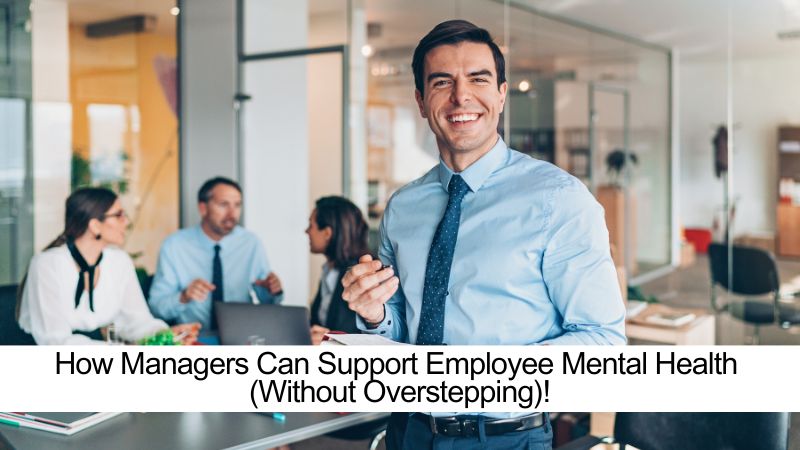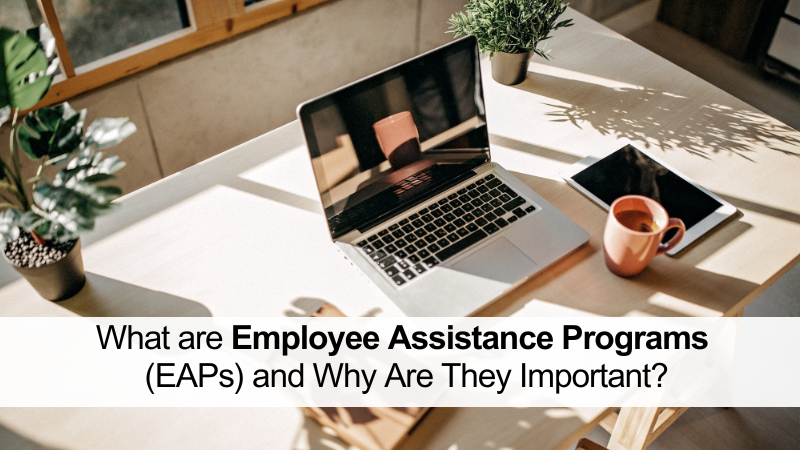The conversation around mental health in the workplace has come a long way. But while employers may offer resources like Employee Assistance Programs (EAPs), it’s often managers who are on the frontlines—spotting the signs of burnout, supporting team members through personal challenges, and fostering emotionally safe environments.
That said, many managers worry about saying the wrong thing or crossing a line. The truth is, you don’t have to be a therapist to support employee mental health. You just need to lead with empathy, awareness, and boundaries. Let’s explore how managers can create psychologically safe spaces while staying within their role.
1. Recognise the Warning Signs
- Managers who are tuned in to their team can often spot when something’s off.
- Look for changes in behaviour—like withdrawal, irritability, missed deadlines, or a drop in performance.
- Don’t assume; simply check in and open the door to conversation.
- Keep in mind that mental health struggles can show up in subtle ways.
Being observant (not intrusive) shows employees that you care and creates trust.
2. Initiate Supportive, Private Conversations
- If you notice someone is struggling, initiate a private, respectful conversation.
- Use open-ended, non-judgmental questions like: “I’ve noticed you seem a bit off lately—how are things going for you?”
- Focus on behaviours and impact, not assumptions about their mental health.
- Avoid diagnosing or giving advice—your role is to support, not solve.
A simple, compassionate check-in can go a long way.
3. Know Your Boundaries
- It’s important to support employees without overstepping into personal territory.
- You are not their therapist. Resist the urge to offer solutions or probe into private issues.
- Focus on workplace-related impacts and remind them of available support.
- Maintain confidentiality unless there’s a serious risk of harm.
Healthy boundaries protect both the employee and the manager.
4. Promote and Normalise Use of the EAP
- Many employees still hesitate to use EAPs due to stigma or lack of awareness.
- Include EAP info in team meetings, onboarding, and one-on-one check-ins.
- Frame the EAP as a proactive tool—“It’s there for everyone, not just for when things are really bad”.
- If appropriate, share examples of how others (anonymously or hypothetically) have benefited from it.
When managers lead by example and normalise support-seeking, others feel safer to do the same.
5. Create a Culture of Psychological Safety
- Employees are more likely to speak up and seek help when they feel emotionally safe at work.
- Model vulnerability—acknowledge challenges and stress without fear.
- Encourage team discussions about balance, boundaries, and well-being.
- Avoid language that glamorises overwork or dismisses mental health concerns.
Psychological safety doesn’t happen overnight, but consistent modelling makes a big difference.
6. Be Flexible Where You Can
- Small adjustments can significantly ease pressure on employees experiencing mental health challenges.
- Allow flexibility in start times, deadlines, or working from home when possible.
- Encourage taking mental health days when needed.
- Trust employees to manage their workload while supporting their recovery.
Empowering employees with autonomy can be more effective than micromanaging performance.
7. Train Yourself and Your Leadership Team
- Supporting mental health is a skill, and like any skill—it can be learned.
- Provide mental health awareness training to all people leaders.
- Invest in upskilling managers in empathy, active listening, and boundary setting.
- Invite experts (via your EAP or external facilitators) to run workshops and Q&As.
When leaders feel confident, they’re more likely to step up in meaningful ways.
8. Follow Up and Stay Connected
- Support doesn’t end with a single conversation.
- Check in periodically—gently and without pressure—to see how your team member is going.
- Continue to provide encouragement and flexibility as needed.
- Celebrate small wins and progress where appropriate.
Ongoing support can help employees feel genuinely seen and valued.
Final Thoughts
Managers aren’t expected to be counsellors—but they are expected to care. By learning to recognise distress, having supportive conversations, and connecting employees to professional help, managers play a powerful role in workplace well-being.
With the right mindset and tools, every manager can help build a workplace where mental health is prioritised—and where people feel safe to show up as their full selves.
AUTHOR Madalin Frodsham, ACT Curious.
CONTACT US 📞 0438 922 979 (Australia Wide) email: hello@actcurious.com
DISCLAIMER The content of this blog is not intended to be a substitute for professional medical advice, diagnosis, or treatment.
COPYRIGHT © ACT Curious Pty Ltd, 2025.






